Eels have long, elongated bodies. They have remarkable life cycles and vary in size as per their species. Eels are ray-finned fish belonging to the order Anguilliformes which consists of eight suborders, 19 families, 111 genre,a and about 800 species. Eels undergo considerable development from the early larval stage to the eventual adult stage and are usually predators.
They are found in length of 2 inches to 13 ft and weigh around 1 oz to over 55 lb. The European conger is known as the most weighed eel, with 240 lb at the length of 10 ft.
Eels are different from other fish; they have separate fins on different areas of their body. Their elongated body has one dorsal fin. Eels have a continuous dorsal, anal, and caudal fin that runs around the tail tip, which helps to swim; they generate waves that travel the length of their bodies.
Eels have very small scales that are embedded within their thick skin so that they have smooth and slippery surfaces. They may also have no scales at all, and due to the absence of scales, eels can produce slime when they feel threatened.
Different Types of Eel
1. Electric Eel
It is a South American electric fish and the only species in its genus; it’s the most known eel, but it is not an eel, but rather a knife fish known for its electric charge. Due to the serpentine appearance, they are often called as electric eels, but they are not actually eels they belong to carp for catfish families they get the name from their shocking abilities and eel-like appearance their special organ releases power and can produce an electric charge of 650 volts. It’s the only animal on the planet to paralyze its prey using an electrical current. They are freshwater electric eels that need to breathe air which means that they must frequently surface to take in oxygen.
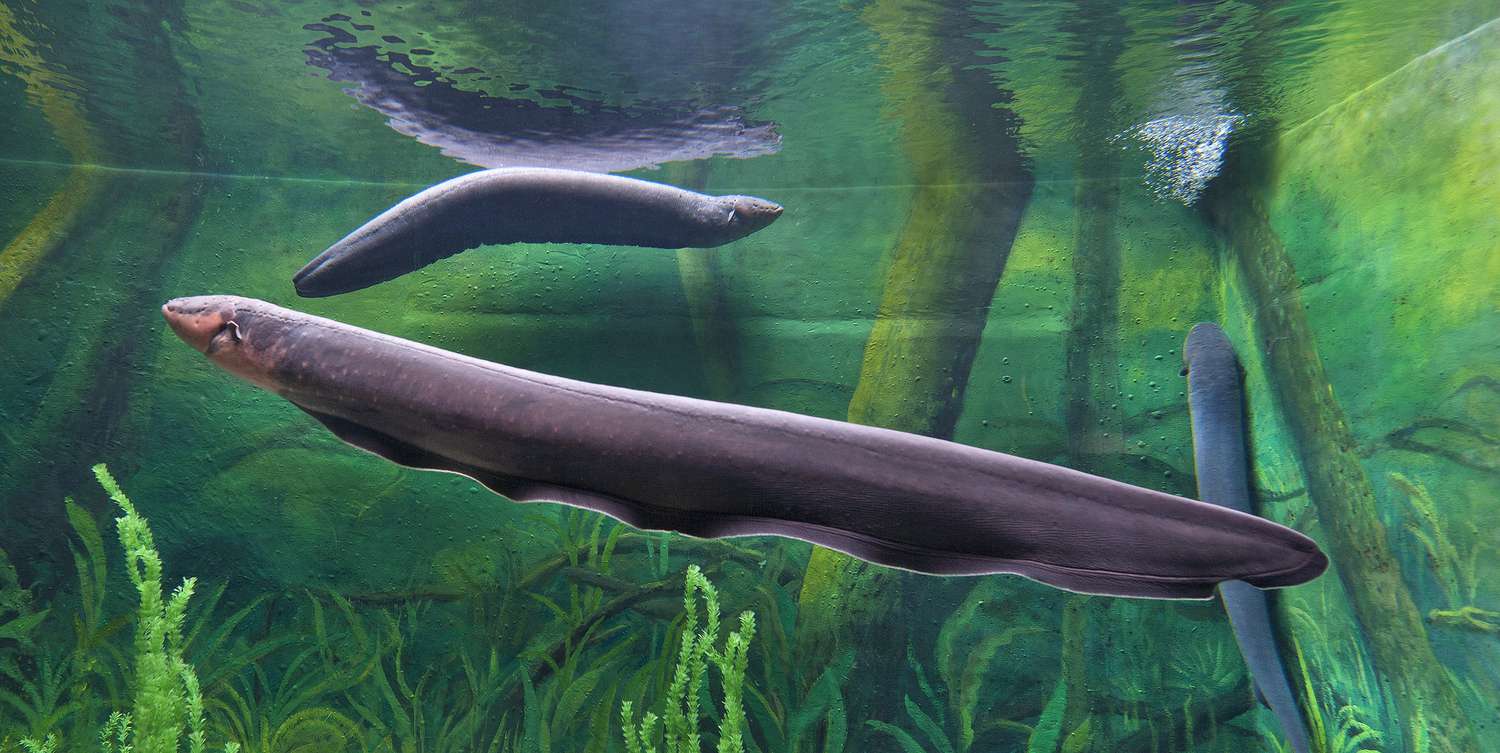
2. Fimbriated Moray
They are carnivorous eels, also known as dark spotted moray or spot face moray. They are widely found throughout the tropical waters of the indo pacific area, mainly on the coast or reefs. These species of eel grow to about 2.5 feet in length. They hunt actively in the night along the reefs and feed themselves on small fish and crustaceans.
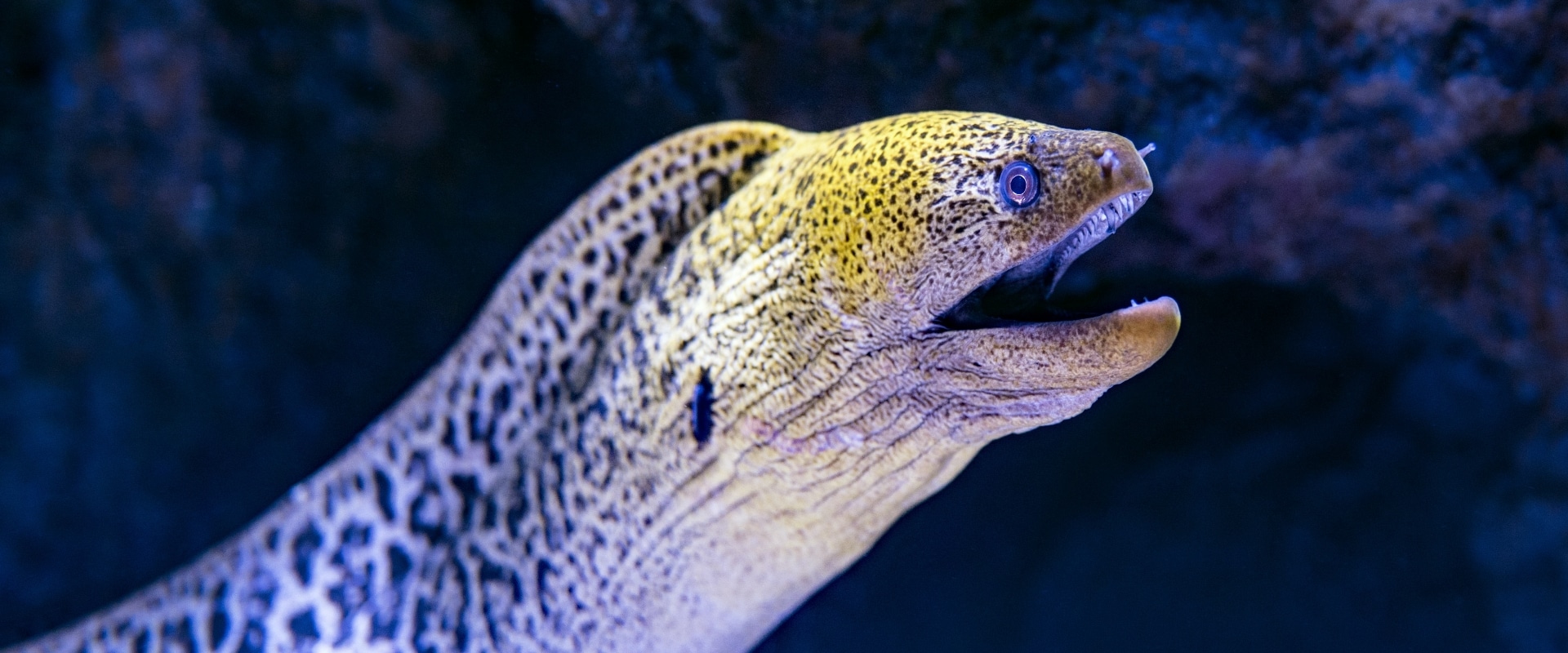
3. Giant Moray
These types of eels are found in reefs in the Indo-Pacific region. At maturity, giant morays have leopard-like specks on their bodies. They feed mostly on fish but also small crustaceans.
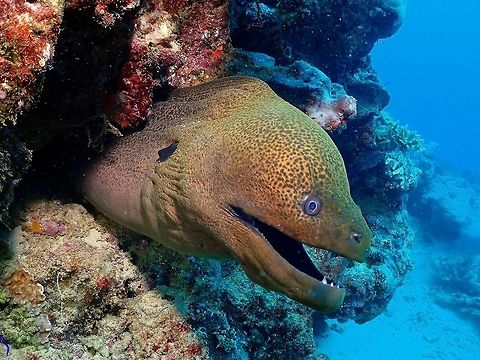
4. Japanese Eel (Anuilla japonica)
They are found mainly in Japan, China, Korea, and Vietnam, also in some regions of the northern Philippines, they live in freshwater and estuaries, and they are found in dark brown and black color. They eat fish, crustaceans, and insects.
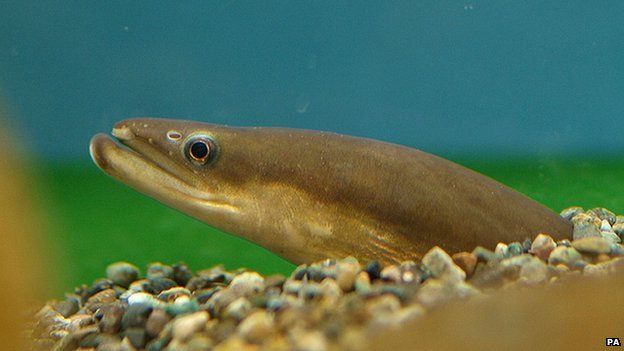
5. African Longfin Eel
It’s a South African Eel that can grow up to 150 centimeters, i.e. 59 inches they are found in olive and gray-black color with light underside. They are found in the western Indian Ocean of Africa from Kenya to Cape Agulhas and Madagascar. They love to live in quiet and fast-flowing water; The African longfin eel survives on fish and crabs they may eat carrion as well.
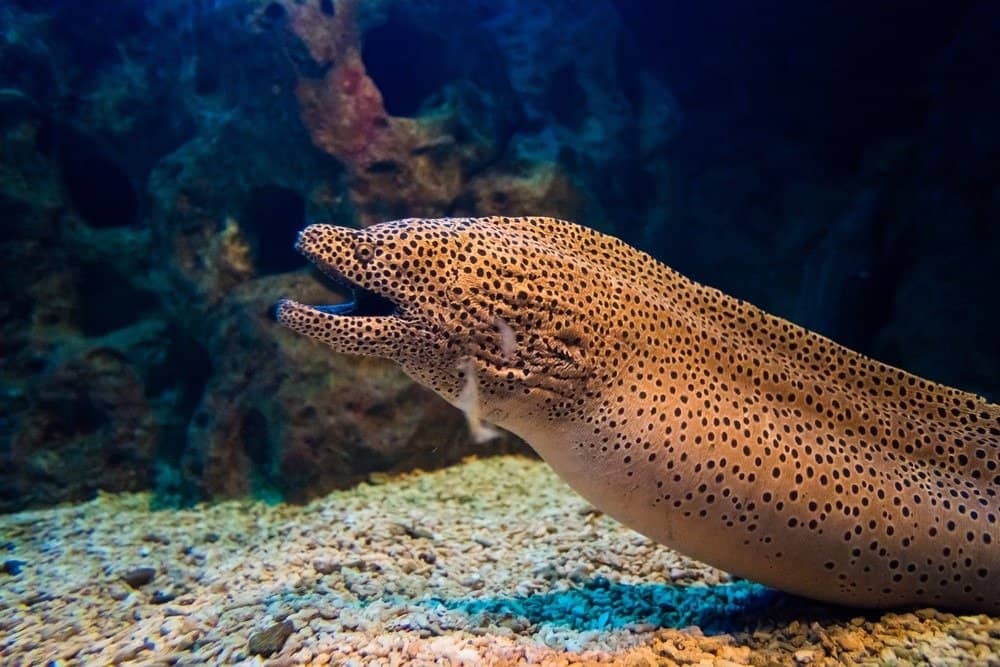
WHAT IS THE DIFFERENCE BETWEEN FRESHWATER EELS AND SALTWATER EELS
Freshwater eels are nocturnal; they prey at night with their weak eyesight but they have an incredible sense of smell. They live their entire lives in freshwater and migrate downstream to spawn in the ocean. True freshwater eels belong to the genus anguillidae they live for around 15 to 20 years. Freshwater eels have scales on their body and they are a crucial source of food in some parts of the world, especially in Europe where they breed at farms at large scales.
Freshwater eels are also referred to as “skin breathers”. They have capillaries under the surface of the skin, which helps them to absorb oxygen; they also have very sharp teeth.
One significant characteristic of a freshwater eel is that it lives in freshwater as juveniles and adults, but they migrate to saltwater to breed. However, some saltwater species, like the moray eel, spend their entire lives in saltwater.
Saltwater eels are commonly seen in the aquarium hobby; they have colorful patches on their body and also tend to use it to hide from danger. These patches blend with the rockwork and sand of coral reefs to protect them from their enemies.
The most common saltwater eels are the snowflake eels, also known as the clouded moray eels and starry moray eels.
These can be widely found in the Indo-Pacific, the Eastern Central Pacific, as well as the Southeast Atlantic regions. They can be found in shallow lagoons. Snowflake eels can reach a maximum size of about 3 feet (91.4 cm) but usually, only grow up to 2 feet (61.0 cm).
The most significant fact regarding freshwater eels is that they have a very complex life cycle though they live in freshwater, they spend a part of their life in salt water where they are birthed, where they breed, and they die their only. It’s been observed that most fish cannot undertake the shift from salt water to fresh water as their cells cannot handle it but some eels can easily accommodate the lack of salt as their Kidneys change so that they are able to hold more salt and maintain the salinity levels in the blood.
How do eels breed
Eels have a very complex life process their reproduction process is still a mystery researchers are working on it; eels breed through an external reproduction process, and when it’s high time for them to mate, they turn to the sargasso sea, which is the breeding ground for all the freshwater eels, eels travel thousands of miles to reach the breeding site.
Eels follow an external fertilization process where females release eggs Into the surrounding water that are fertilized by the male sperms. Females release millions of eggs which millions of sperms released by males fertilize; the eggs that come in contact with sperms get fertilized, but both male and female eels die after spawning.
The Sargasso Sea is a breeding site of eels spread across a two-million square mile span of the ocean; you can locate the Sargasso Sea in Bermuda, the Azores, and the West Indies. All freshwater European and American eels reach Sargossa for reproduction; Japanese and Giant mortal eels travel elsewhere to reproduce.
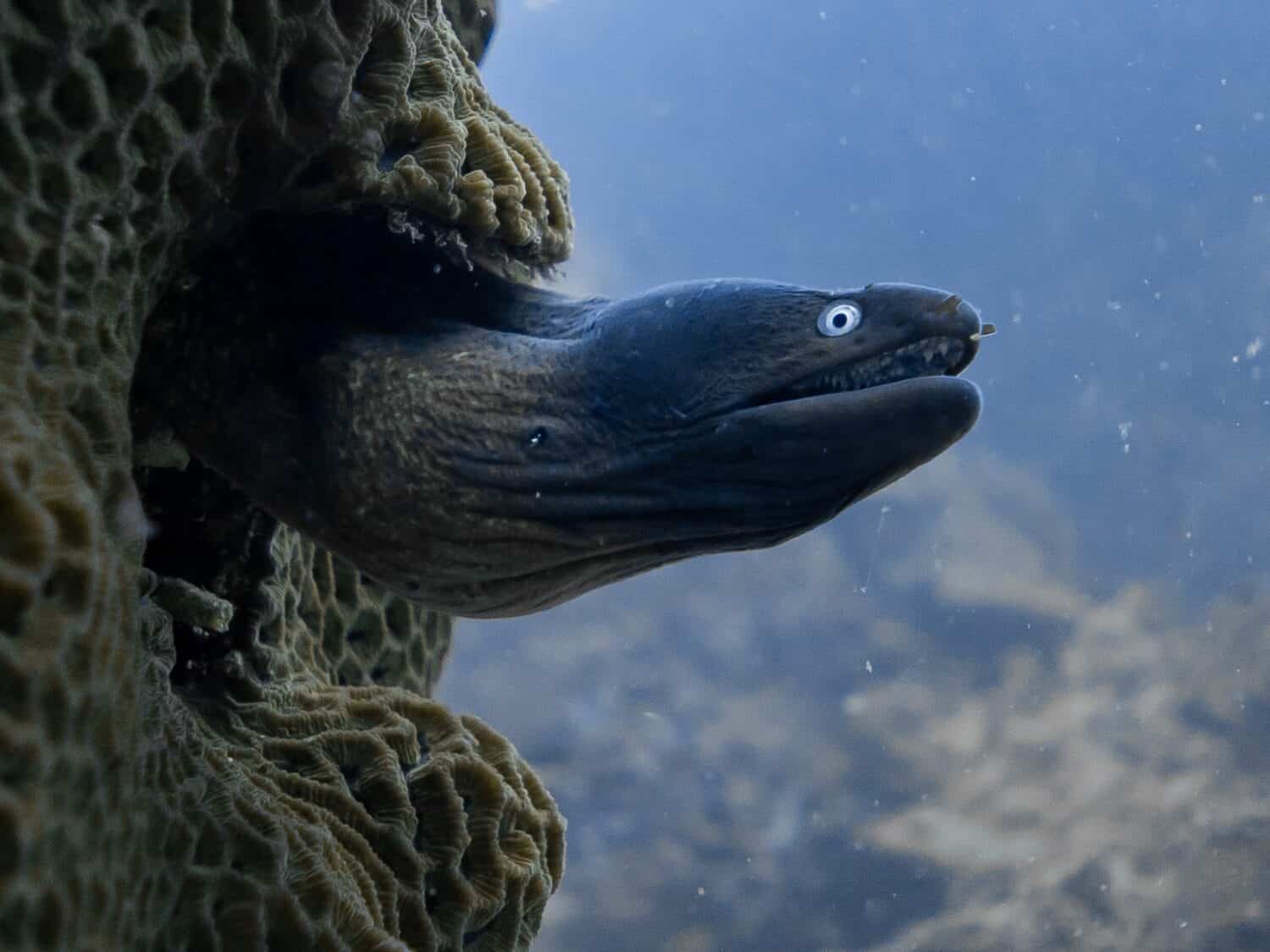
Freshwater eel reproduction is somewhat like saltwater eel reproduction, but there are some facts that are still unknown about saltwater eels; several eels produce eggs and fertilize in the same way the freshwater eels do, but their larvae don’t travel across the ocean like freshwater larvae, they settle at the bottom of the ocean to hide escape from traveling.
There are several eels that live several miles from the Sargasso Sea. They travel long distances to reach the breeding ground; they are not afraid to travel thousands of miles/kilometers to reach it.
How do eels reproduce
Once the reproduction process takes place, another life cycle begins the eggs laid by eels will float to the surface of the water, where they hatch. You can see the larvae of eels, floating in the ocean currents. This larva is called leptocephali. They are very small, shaped like a leaf, and are transparent.
You can see through a larva they have simple tube-like bodies filled with clear gel the gel contains glucose amino glycan compounds that transform them into adult tissues during metamorphosis.
They go through an incredibly long journey where the leptocephali will travel to the freshwater regions where they’ll spend the great of their lives. The leptocephali will drift across the ocean for about a year. By the time they make it, they will have changed again.
The next stage of eel reproduction is the “glass eel” stage, as they are transparent in this stage. They are called glass eels. In this stage, they are now grown up to 2-3 inches (5-7.6 centimeters) long, and moreover, they look almost like a fully developed eel; now they have the slender, elongated shape of an adult eel, and their fins have grown well.
They search for freshwaters to reside there and make their homes as glass eels, they are determined to live in fresh waters, and they keep migrating often to find a freshwater location from ponds and lakes; they slither over the land like a snake.
While traveling all the time, the color of their body changes to black, and they have reached the growth of 10 inches to this point, called the elver stage. Elvers are basically smaller versions of the adult eel. At this point, they are still migrating further up streams and rivers.
The growth keeps taking place. The eels will become immature yellow eels, and they will live for a long time in the freshwater; this is the stage in which freshwater eels will live most of their lives For about 20 years and they are still considered juveniles.
Researchers have found that eels that live in predominantly freshwater locations will live longer and grow larger. Eels that live in brackish areas closer to the ocean mature much faster.
How Eel Breeds
Eels sex life is a mystery as researchers cannot ascertain how they reproduce or when they reproduce their sexual organs; however, there are observations that there are gonads in the late juvenile stage when they are about 11 inches (26 centimeters) long. You will be amazed to know that there is no certainty of eels reproducing. Moreover, scientists observe that the environment plays a vital role in determining the eel’s breeding period and when they reach sexual maturity.
The temperature and salinity levels are the two most important determining factors that may help in eels’ reproduction time. There is a possibility that low eel populations will produce more females.
When the eels are finally matured, they are ready to reproduce, and it may be the last life stage as they die soon after spawning their young ones.
When finally it is time to reproduce, males are usually about 15.7 inches (40 centimeters) long, while females can be up to 47.2 inches (120 centimeters).
How eels reproduce is a mystery, but they do reproduce once during their lifetime; late winter and early spring are the perfect time for them to reproduce; the adults travel thousands of miles to the breeding site and soon die after spawning. It is the only last thing in their lifespan they don’t survive; thousands of eels die after reproduction. Male and female eels are part of the spawning process when the female eel releases eggs in the water column, the male eels release the sperms into that column, which helps in fertilizing the eggs, a single release of around 2 to 0 million eggs.
Survival Facts About Eel
Eels are ray-finned fish they are not snakes forget about any resemblance to the snake they both are different species, eels are fish that spend their whole life in saltwater and freshwaters, and they have pelvic fins, dorsal, pectoral, and caudal fins. Eels generate waves to swim that travel through the length of their bodies.
Eel fish survive in crevices, holes, and small spaces. Snakes, however, are snakes: they have scales on their bodies which are absent in almost every eel species.
1. Eels Swim In The Most Amazing Manner
Eels are good swimmers; they have a sense to navigate their habitat in the unique way common to fish. The most fascinating fact about eels is that how they move their body in water, eels move about in the water through undulation which involves moving their whole body like a rolling wave.
Their method of movement is similar to the moving pattern of the snake. However, eels involve their anal and dorsal fins by elongating them along their bodies to help them swim smoothly, eels can swim backward. They create a wave with their bodies that helps reverse their movement’s direction.
2. Eels Are Flat And Transparent At Birth
Several creatures are born under water among them one is an eel. Eels are flat and appear transparent when they are born. These little ones are called leptocephalus, the Greek word for flat head. Many mysteries are still associated with the birth of baby eels and their growth and development. Baby eels are different from adult ones; you cannot find their growth period, which makes it difficult to track them. Baby eels life stage begins as larvae form that appear transparent, also known as glass eels, and then level up to elvers. When they become elves, they finally find an adult habitat for them.
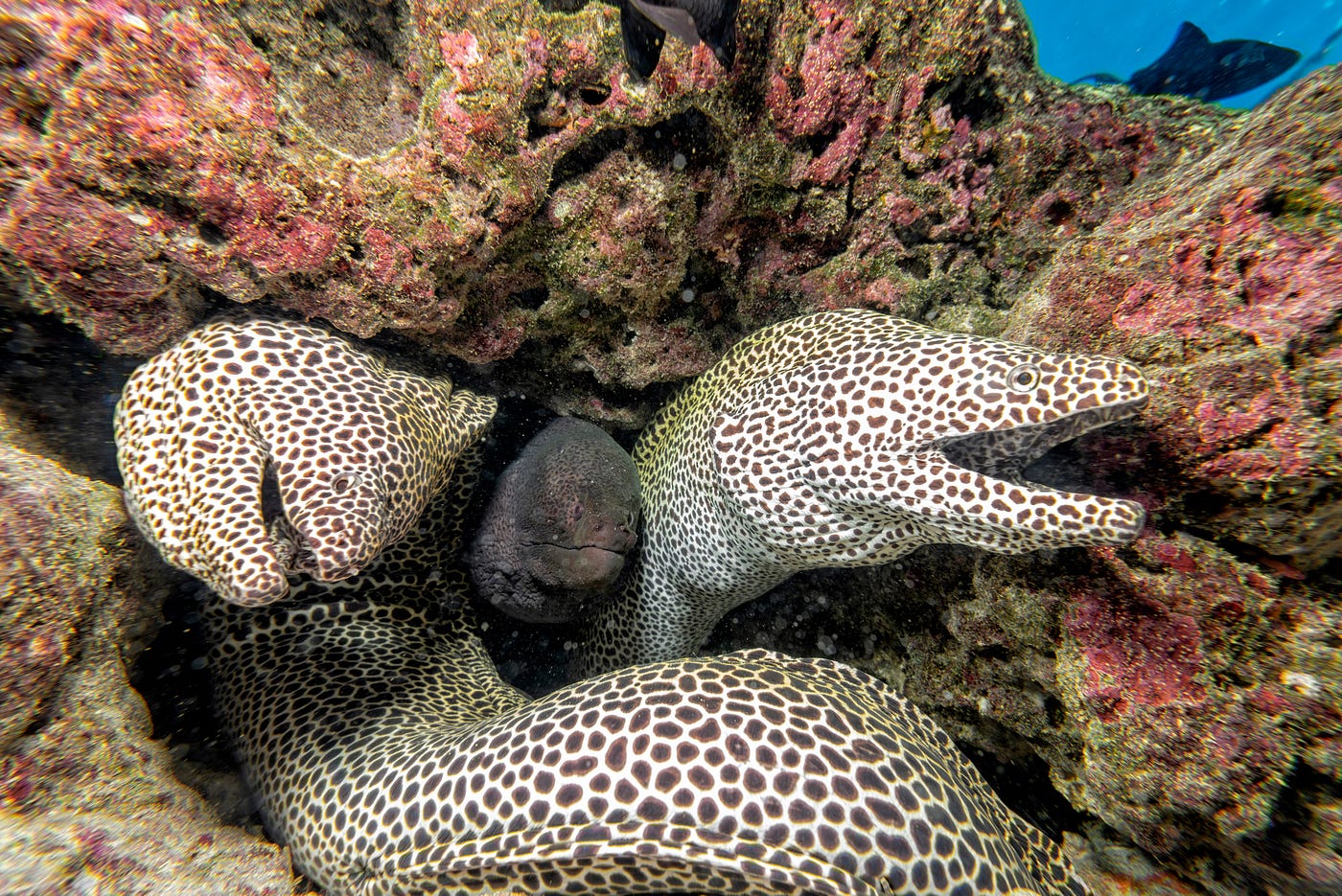
Their movement patterns are similar to the moving pattern of the snake; eels have elongated bodies that help them stabilize in the water as they swim; eels can swim both forward and backward. They can do this by reversing the direction of the wave they create with their bodies.
When you hear about eels, the one thing that flashes in your mind is a giant snake-like fish that can produce an electric current of 500 volts. Well, electric eels are not really eels. It is a knife fish. You can really find them in freshwater bodies, especially in South America and truly, eels cannot produce an electric current.
3. Most Eels are Nocturnal
Eels are night-hunting creatures they move out more during the night to feed themselves, They hide under rocks logs and mud of the bottom of the water during the daylight where as few live in solitary life during their Juvenile and adult life some Garden eels live in Big colonies of several 100 individuals in tropical Reef regions Most eels are nocturnal animals, This is the one main reasons why studying or observing eels are difficult, it takes a lot of time to track them.
The eels follow a lifespan of around 15 to 20 years, typically depending on their species American eel’s lifespan is at least five years, and some reach the age of 20 also, but the most amazing thing is when each reaches maturity, they return to the ocean where they breed young ones and die.
Electric Eels Aren’t Eels
When you hear about eels the one thing that flashes in your mind is a giant snake-like fish that can produce an electric current of 500 volts well, electric eels are not really eels it is a knife fish related to catfish that can easily be found in a freshwater bodies especially in South America and truly eels cannot produce any electric current. However, they are not eels,, but they have an elongated cylindrical snake-like appearance and just like to eat they also spend most of their time at the bottom of river beds and streams.
Eel Reproduction Discovery
The process of observing and figuring out how eels reproduce has been long and quite mysterious. For years, researchers believed that the five different life stages were different for animals altogether until 1896, leptocephali were recognized as larval eels, but they couldn’t discover where the eels came from.
Eels really gave hard times to the researchers; for 18 years, Danish oceanographer Johannes Schmidt traveled the Atlantic Ocean across four continents.his determination brought some fair results but still not satisfactory he found the smallest larva of the time just at the edge of the Sargasso Sea.
The researcher was very keen to learn how and why the sargasso sea is the breeding point of eels For the longest time, it was believed that eels spawned in the Sargasso Sea. The eels would travel thousands of miles/kilometers from freshwater rivers to reach the Sargasso Sea, but weren’t sure how. They hadn’t noticed any actual channel for breeding or migration. They found eel eggs at the sargasso sea, but researchers decided to track American eels a few years ago. Some Canadian researchers off the coast of Nova Scotia attached GPS trackers to 38 American Eels, of which 28 of the eels were successfully tracked for a significant distance.
There was one eel that the researchers were able to track for the entire migration. The eel swam to the Sargasso Sea’s northern parts after migrating 1,500 miles (2,400 kilometers) in just 45 days. The research and studies have presented a lot about eels migration and spawning.
There are Conservation groups working on toes to conserve several threatened eel species; the Zoological Society of London (ZSL) is working to protect the European eel. Their main motive is to research river improvements, public engagement and advising policy.
In 2010, Greenpeace International included the European, the Japanese and the American eel to its seafood red list. Japan is the biggest consumer of eel whereas Greenpeace urges commercial fisheries to stop selling species on its “red list” as part of its sustainable seafood campaign.
How do eels reproduce is a mystery as the facts claiming their sexual life or mating is very few you can find eels in oceans across the globe, and its many species are typically found in freshwater habitat well some species prefer saltwater as their habitat some species spend their life in frigid water at the poles some prefer unique distribution and range while some species range across vast areas other prefers a small region this is still much unknown about eel reproduction and mating
They are nocturnal animals and also face several threats such as pollution, environmental changes, overfishing and water mechanisms that affect their habitat and migration passage.













